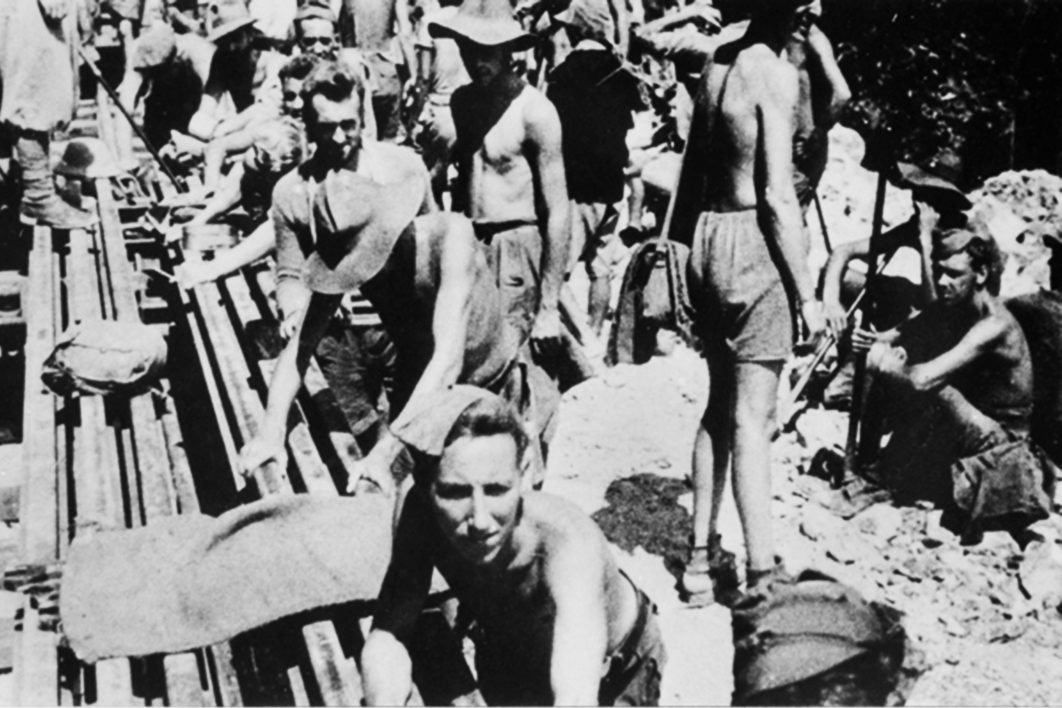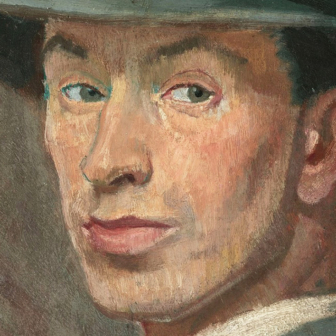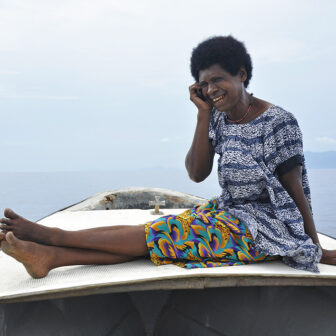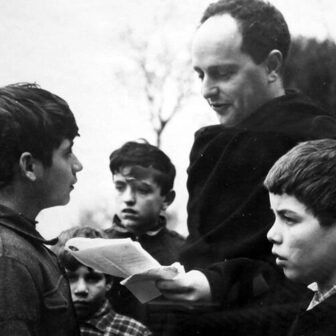The Battle Within: POWs in Postwar Australia
By Christina Twomey | NewSouth | $39.99 | 320 pages
To stop fighting, lay down his weapon, and surrender to the Imperial Japanese Army was about the riskiest thing an Australian soldier could do during the second world war.
Some 22,000 Australians were captured when the Japanese army swept southwards in early 1942. By the time their ordeal ended three and a half years later, one in three had died in captivity. They had been worked and starved to death, or had died in massacres or as a result of neglect. They had been denied medical aid, sent on forced marches, and in some cases drowned en route to Japan. And after they returned to the homes they had dreamed of during their long years in prison camps throughout Asia, they continued to suffer and die at a greater rate than other veterans.
Until now, the public version of their story has tended to end when they were liberated in 1945. What happened in the decades after they returned to their bewildered families is the “battle within” that Christina Twomey unearths in this revealing account of the experiences of former prisoners of war, or POWs, between 1945 and the start of the twenty-first century.
In the process, Twomey sheds light on changing national attitudes — on what we were, and what we have become. It’s a story, told with insight and compassion, about a long and often interrupted journey towards acceptance, understanding and reconciliation — a tough journey with the heaviest burden on men least able to carry it. The battle was fought on many fronts: in the damaged minds and bodies of survivors; in their homes; with governments and their repatriation and veterans’ affairs bureaucracies; in the army that disgracefully failed to honour them; and in the wider society.
It starts with the former POWs struggling with memories and wounds, physical and psychological. Many fought for support, and for Australia to recognise their battle to put the past behind them. One spoke of being trapped in a “labyrinth of despair.”
To tell their story, Twomey draws on a previously untapped source — the written applications made by ex-POWS to a trust fund that the Menzies government set up to assess their claims for financial support as they tried to rehabilitate themselves. Many were uneducated, conditioned not to express their inner thoughts, and ashamed to appeal for help in a society that sometimes viewed them with profound ambivalence. Their words are the most powerful and moving in Twomey’s book.
Some felt they were unfairly regarded as second-class soldiers because they had been captured. Their wartime service didn’t fit with the Anzacs of legend, mythologised for their battlefield prowess and seen through a particularly Australian prism of understanding about the behaviour of Australians at war.
Their captivity at the hands of an Asian enemy and their treatment as “white coolies” had upended the racial hierarchy of the British Empire and of Australia, where whiteness was essential to national identity. For many, captivity also presented a deeper, more personal challenge to their masculinity. These “were insults to all that had been held dear,” Twomey writes.
Many of those who sought help from the fund struggled with tormenting memories. One, who had suffered horrendous beatings and had been prepared for execution before a miraculous reprieve, wrote of nightmares, headaches, poor eyesight, sleepless nights, and “nerves” constantly on edge. “All the money which we deserve cannot repay what we lost in human sufferings in the three and half years’ captivity, spent with the almighty Nippon army,” he wrote.
The men, and sometimes their wives, wrote of dysfunctional family life and an inability to settle down, of drunkenness and sometimes violence. Sexual impotence, attributed to their time as POWs, was a recurrent theme.
In 1958, amid government moves towards reconciliation with Japan, the wife of a timber worker wrote to the trust fund, “It’s fine to say be a man shake hands with the Japs the war is over[;] it’s not over in the homes of men who drag themselves to work & force themselves to stand on their feet then crawl into bed to[o] tired to enjoy their family no it’s not over in the homes & especially when men are to[o] proud to ask for help they would rather pray for release of suffering, please assist us.” If she saw things with pained clarity, many of those in powerful positions did not.
The ex-POWs’ fight for support faced blind resistance from unlikely quarters, starting with the army leadership. Even allowing for the attitudes of seventy years ago, the response of army chiefs to suggestions these former soldiers might need particular assistance was extraordinarily unsympathetic.
As early as 1943, the then chief of the armed forces, General Sir Thomas Blamey, insisted that “surrender to the enemy on the part of the soldier in preference to death is dishonourable.” As Twomey points out, these men had been ordered by their officers to surrender. She could equally have pointed out that Blamey’s blimpishness echoed a central element of the militarist culture that infused the Japanese army and helps explain the brutality it inflicted on its captives. The Japanese military, after all, believed that soldiers who surrendered were without honour and should be treated accordingly.
The army’s resistance continued after the war, when it opposed a campaign by ex-service organisations for a special subsistence allowance for ex-POWs. In 1950 army chiefs argued that the allowance risked undermining the army’s fighting ability, as it “will be interpreted by men of weaker fibre as a premium on surrender.” Even then, this argument — that soldiers would surrender in order to be paid extra — defied logic.
Repatriation administrators and other government officials also opposed the allowance, not wanting to differentiate between one group of veterans and another. Others, with an eye on the potential pensions bill, feared creating a culture of entitlement. In the face of this resistance, the government instead created the Prisoners of War Trust Fund, to which men could apply for financial support. This became another humiliating battleground for many of the 7000 veterans who applied during the twenty-five years the fund operated.
Twomey finds evidence of ex-POWs’ deep resentment of the fund’s opaque, patronising and intrusive processes. One rejected applicant signed a letter of complaint to the trustees, “with a resolve never to re-enlist for the sort of country represented by people like you.”
The attitudes displayed by the administrators, Twomey argues, exposed the class divisions prevalent in postwar Australia. While trustees included former POWs, they were officers whose experience in captivity was different from that of the “other ranks.” Ten per cent of officers died in captivity, compared with 36 per cent of the other ranks. These divisions, and others of wealth, education and opportunity, transcended any shared experience of suffering.
If Twomey’s book challenges the myth of universal respect and sympathy for veterans, it also offers a counterpoint to the caricature of the racist and embittered ex-POW, unable to forgive or forget. While many retained a hatred for their former captors, such views were not universal and ex-POWs played a significant role in postwar reconciliation. Some, including Weary Dunlop, refused to take part in war crimes trials. One case of a former POW highlighted the cruel absurdity of the White Australia policy: he remained in the army and served in the occupation of Japan, where he married a Japanese woman who was then refused entry to Australia. Eventually 650 Japanese wives of Australian soldiers were allowed to emigrate.
The former prisoners had returned to Australia with first-hand knowledge of Asian countries and people. Some were determined to help and honour local people who had assisted them in captivity, and to build stronger connections with our regional neighbours. Their personal commitment formed a pathway into Asia, in tandem with the determination of governments to build relationships with the region for strategic, political and economic reasons.
In Twomey’s telling, the process by which the “battle within” became the “battle resolved” emerges three decades after the end of the war. In a compelling narrative, she astutely unpicks several strands in this change. One factor was another Asian war, in Vietnam, after which came an emerging realisation of the damaging legacy of war for veterans. At the same time, a transformation of trauma theory led to acceptance of post-traumatic stress disorder.
Former prisoners, including Stan Arneil and Weary Dunlop, published their wartime diaries, which presented evidence that our wartime heritage was more complicated than the Anzac legend suggested. At the same time, there was intergenerational reconciliation between sons and daughters and their fathers.
By 1988, the army that had once regarded surrender as dishonourable now hosted a memorial to POWs in the Royal Military College, Duntroon. By the turn of the century, Twomey writes, “The POW, once viewed with ambivalence, had now become the exemplar of national traits in wartime.” Ambivalence had been replaced by veneration.
This is an important book that fills a gap in our knowledge of ourselves. While it’s based on the academic research of a professional historian, it’s told with skill, sympathy and human insight.
The story concludes with a kind of resolution, but Twomey cautions that all the lessons from the POW experience have not been learned. She relates how, in 2015, she spoke about the challenges faced by ex-POWs at a conference on mental health in the aftermath of conflict. After her presentation, a veteran of recent conflict in Somalia and East Timor turned to her and said, “Nothing’s really changed.” Others then took to the floor to reveal that issues of alcoholism, domestic violence and self-harm continued to plague some contemporary ex–service personnel, amid continuing shortcomings in government support. The anger was palpable. “In that sense,” Twomey concludes, “the battle within continues.” •




